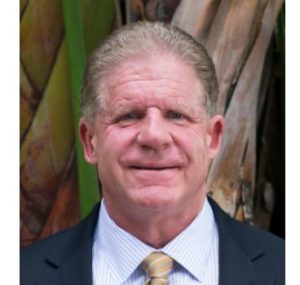It remains to be seen if Lee County will file a lawsuit against the Army Corps of Engineers over its plan to manage Lake Okeechobee for the next decade. Army Corps Colonel Andrew Kelly presented the plan Monday in a 2-hour virtual meeting with stakeholders from all over the state of Florida.
The plan will be optimized with small tweaks over the next several months before being implemented when the Herbert Hoover Dike rehabilitation is complete at the end of 2022. Once Kelly’s presentation concluded Monday, elected officials, environmental representatives and others were given time to comment.
The Lee County Board of Commissioners has hinted at filing a lawsuit against the Corps if they do not believe the new plan protects the residents of Southwest Florida. The good news for Southwest Florida residents was that Kelly did mention that one of the goals when optimizing the new Lake Okeechobee System Operating Manual was addressing the stressful releases to the Caloosahatchee.
And while there was no official Lee County Commission statement on Monday after Kelly’s presentation, Chairman Kevin Ruane commented during Kelly’s session that more water needs to be sent East. Congressman Brian Mast has been advocating that no water be sent to his side of the state. He’s winning that fight. Kelly said Monday that sending water East will be considered as a last resort only.

Bonita Springs Councilman Jesse Purdon, who also speaks for Congressman Byron Donalds on the water issue told BTRN that Monday’s meeting with the Army Corps of Engineers was not a home run for our coast by any stretch of the imagination. “Though we were pleased to see the corps say they will work to cap flows in zone D at 2100 CFS (Cubic feet per second) that’s great, but I would like to see how. I worry this keeps on moving, they model it and then they decide they can’t cap us at 2100. If they cannot, then we lose the one thing we did take away we were given. We have to get the harmful discharges under control and that means the East coast is going to have to take water. The corps showed the importance of S-80 for the east coast with no reference to S-79. Then they said East coat is damaged coming into this, we have been damaged and worse for a lot longer yet not a word on that. As things are right now we are the only outlet for water from Lake O in zone D where we spend the majority of our time. The east coast and all other stakeholders will have gains and those gains will be unfortunately at the detriment to our estuaries. More of the same does not work for us and we are not done by a long shot”
Kelly acknowledged that some stakeholders want more water to go east under the general rule of being fair. When pressed on whether this plan is fair to the west coast, Kelly said, “Alternative CC is a great way forward. It provides the best balance. Iteration 3 will make it even better. It’s the best way forward. It’s the best version of balance we hope to achieve.”
At a Monday afternoon press conference, Kelly said the Corps will “look at S-79.” The new plan will “communicate” releases at S-79 but he did not commit to measuring the flows at S-79.
Captains For Clean Water Executive Director Dan Andrews told Beach Talk Radio News that “Colonel Kelly paved a clear path forward for how we fix these problems to the Caloosahatchee. Now, it’s up to us to let them know what level of benefit we want to see. We’ll continue ensuring our supporters’ voices are heard loud and clear throughout this optimization phase. Now is the time to stay vocal.”

Sanibel-Captiva Environmental Policy Director James Evans tells Beach Talk Radio News that he’s happy that the Corps has indicated that they will optimize the plan to cap flows at 2,100 cubic feet per second to the Caloosahatchee in Zone D, the operational band of the schedule where we will spend the majority of the time. He says this would maintain flows to the Caloosahatchee throughout the operational band in the optimal flow range.
However, Evans adds, it remains to be seen if this can be achieved without sending more water to the east coast. “It is concerning that the Corps appears to be working to eliminate regulatory flows to the St. Lucie at all costs, even if it means disproportionately impacting the west coast communities. We remain very concerned that the Army Corps is not addressing some of our fundamental concerns, including measuring flows at the Franklin Lock (S-79) and addressing the increased flow volume to the Caloosahatchee and resulting nutrient loads that can feed harmful algal blooms such as blue green algae and red tide.”
When asked about how a lawsuit might delay LOSOM being implemented Kelly said, “I’m not going to lawsuit land.“


Comments are closed.